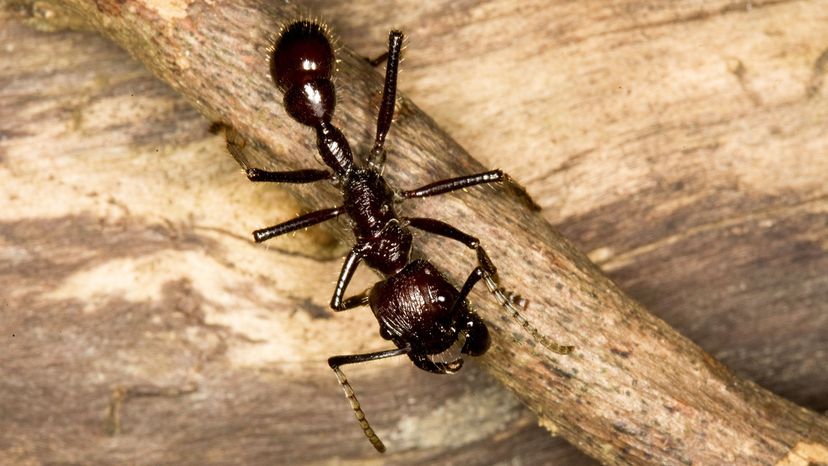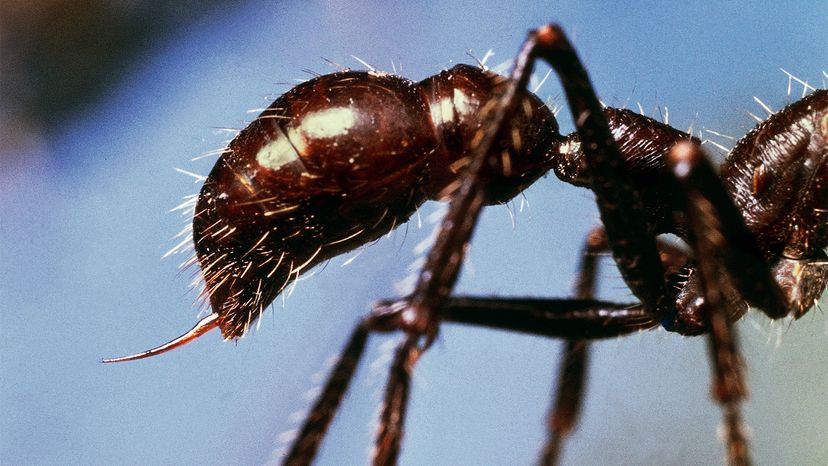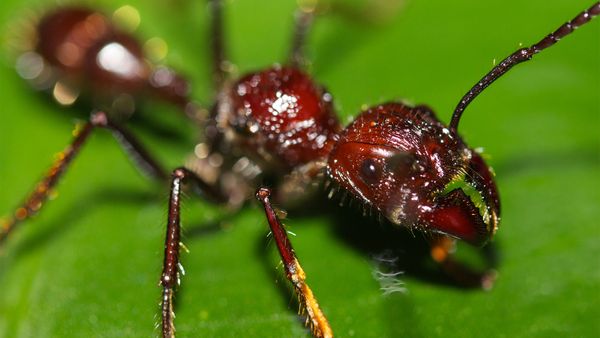
In his book "Sting of the Wild," entomologist, insect sting connoisseur and creator of the Schmidt sting pain index, Justin Schmidt has this to say about the sting of the bullet ant:
"Paraponera is the insect star in stories worthy of telling to one's grandchildren.... If stung, you might not think you will live to see grandchildren, but, rest assured, no one has ever died from bullet ant stings."
Advertisement
Schmidt has spent his career cataloging how different insect stings feel to the person being stung, and has had to dig deep to find proper analogies for each, in addition to rating the pain on a four point scale. As you'd imagine most of the world's insects rate lower on the pain scale, but Schmidt has given three special bugs a four-star rating for pain: the tarantula hawk (Pepsis grossa), the warrior wasp (Synoeca septentrionalis) and the bullet ant (Paraponera clavata).
Of the bullet ant sting, Schmidt rhapsodizes in his sting pain index: "Pure, intense, brilliant pain. Like walking over flaming charcoal with a 3-inch [7.6-centimeter] nail in your heel."
Advertisement

